ISSN ONLINE(2319-8753)PRINT(2347-6710)
ISSN ONLINE(2319-8753)PRINT(2347-6710)
B.Vamsi Krishna 1, K.Priyanka2
|
| Related article at Pubmed, Scholar Google |
Visit for more related articles at International Journal of Innovative Research in Science, Engineering and Technology
Irrigation is defined as the human management of the hydrologic cycle to get better crop production and quality and to reduce commercial work of drought. Irrigation is the reproduction application of water to plants for their growth and development. Irrigation water is supplied to add the water available from rainfall and the influence of soil moisture from ground water. Irrigation water comes from adjacent rivers or groundwater or storage ponds exactly calculated to gather High River flows during winter. Pipes, gutters and wells dug into the ground to allow water to be taken from its source to the farmhouses, vineyards and plantations where it is to be used. Today a distinct range of ever-evolving technologies exist to resourcefully apply irrigation water to crops. The water that is needed can be used depends on the kind of crop, the soil in which the crop is being developed and the amount of rainfall in that area. Precipitation is the noticeable and wellspring of water for watering system. It is not accessible entire the year. The downpour water will be put away in tank or in sub-surface and rainwater assumes a conspicuous part and is utilized as assets of watering system water without boundless period.
Keywords |
| ARM, GSM, Sensors-LDR, Soil, Temperature, Gas, Humidity. |
INTRODUCTION |
| Remote Sensor Networks (WSN) has a few copious application zones. WSN is one of the advanced innovations for spanning virtual world consequently, empowering them to impart. A WSN is made out of various sensor hubs, which are generally embraced in a locale to screen specific encounters in a geospatial area. Sensor hubs are little remain solitary installed gadgets that are wanted to perform distinct straightforward calculation and to send and get information. They have appended to them various sensors, gathering data from the nearby environment that is continuously shown. Remote Sensor Networks have been utilized in both military and regular citizen applications, for example, goal following, habitant checking, natural contaminant distinguishment and precision of agribusiness. Precipitation is the principle wellsprings of water for watering system; it is not accessible as the year progressed. The downpour water is put away either in tank or in sub-surface is utilized as assets of watering system water for a boundless period. Taking after are the wellsprings of watering system water. Water is a standout amongst the most valuable wares on the planet and it needs to be safeguarded for future eras. Watering system is one of the water expending businesses. It has been esteemed that the world's watering system effectiveness is short of what 40 percent. So as to enhance watering system viability, it is essential to watch the dirt Volumetric Water Content (VWC) to keep away from over of watering plants. Over watering likewise causes organisms structure sicknesses and different infections in plants. Hence watering system checking is one of the basic variables in a product administration framework. |
| Surface water: It might be by streaming waterway or water put away in tanks, lakes, lakes, pools or counterfeit repositories, for example, dams, floods and diversionary bunds with distinctive stockpiling limit. |
| Ground water: Water that is put away in the underground is known as groundwater. |
Goals of Watering System: |
| To supply water for the food and development of plants ïÃâ÷ to quicken the rot of natural matter in the dirt and to keep action of the microorganisms at the ideal level. ïÃâ÷ to uproot the weight state of plants. ïÃâ÷ to channel harmful salt structure the dirt. ïÃâ÷ to maintain the temperature and moistness of the dirt. ïÃâ÷ to control the hurtful soil creepy crawlies. ïÃâ÷ to recover decrepit area and to bring soil condition |
II. EXCITING WORKS |
The different sorts of Systems of Irrigation rehearsed in India: |
| Watering system implies supplying of water to the dry land as an improvement of downpour water. It is primarily implied for farming. There are different sorts of frameworks of watering system systems in diverse constitution of India. Watering system in India is passed through the wells, tanks, channels, Perennial channel, Multi-reason waterway valley ventures. An sufficient water supply is important for growth of plants . When rainfall is not sufficient, the plants must receive extra water from irrigation. Several methods can be used to supply irrigation water to the plants. |
1. Well Water Irrigation framework |
| Wells are chiefly found in U. P., Bihar, Tamil Nadu and so forth there are a few sorts of wells, those are —shallow wells, profound wells, tube wells, artesian wells . From the shallow wells water is not sufficiently accessible in light of the fact that the level of water goes down all through the dry months. Profound wells are more fitting for the goal of watering system as water is accessible from them as the year progressed. Tube wells are likewise utilized for the farming purposes. A profound tube overall outlined by power, can inundate a much bigger territory (around 400 hectares) than a surface well (1/2 hectares). Tube wells are primarily utilized as a part of U.p., Haryana, Punjab, Bihar and Gujarat. In Rajasthan and additionally in Maharashtra, artesian wells are currently supplying water to rural terrain |
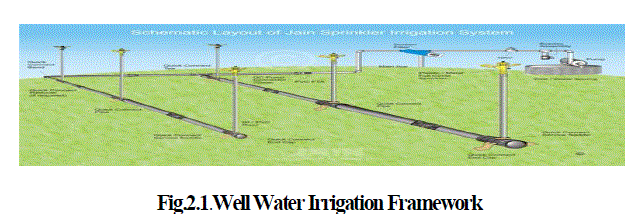 |
| 2. Tank Water Irrigation framework: In the Deccan, stores are made by building hindrances. This framework is incredibly chosen in the States of Tamil Nadu, Andhra Pradesh, and Karnataka and so forth. In Northern India, tanks are built for water stockpiling . From all these tanks, water is brought to the fields through the trenches. |
 |
| 3.Immersion Irrigation framework: Waterway watering system is assuming an imperative part in Indian agribusiness. Channel requires about around 42% of aggregate farming area. In numerous spots amid the time of blustery season, there is a surge in the streams. The surge water is allowed to the field crosswise over channels. These channels are found in W.b., Bihar, Orissa, and so on and in some different spots. They supply water just when there is surge in the streams, and thusly, there is no utilization amid the dry season when water is basically needed. |
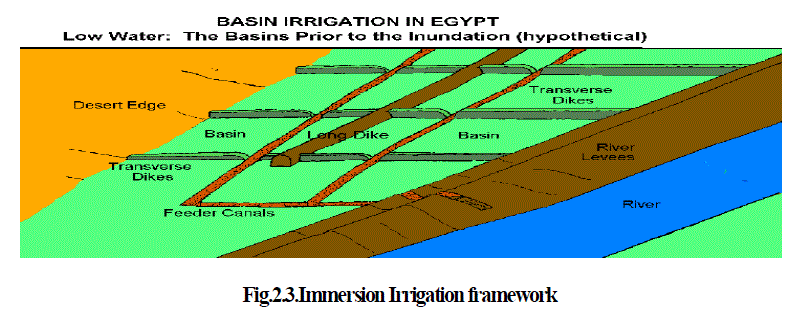 |
| 4. Perpetual waterways Irrigation System: With a specific end goal to give water as the year progressed, supplies are developed for water stockpiling. From these supplies, water can be given to the fields at whatever point there is need for it. So this arrangement of watering system guarantees supply of water in all season. This sort of enduring waterway is for the most part found in Punjab, U.p., and Tamil Nadu. |
 |
III. PROPOSED EMBEDDED SYSTEM DESIGN |
| The main intention of this project is to give an efficient explanation for automatic control of irrigation motor for untrained. Presently a day's innovation is progression with time, it totally taken the way of life of individuals. despite the fact that there is such a criticalness for innovation in our routine life there are even individuals whose ways of life are far to this well known term engineering. So it is our commitment to plan few reliable frameworks which can be even reasonably utilized by them. This fundamental thought offered starting to the undertaking wireless controlled soil dampness sensor. Here the mechanization process is done by the micro controller technology. The GSM Based Smooth Irrigation System is the project in which we get constant up to date status of the operation carried out in field (Farms) in the form of SMS as well we can include other systems such as LCD displays, sensors, Burglar alarms, soil sensor and Smart Controllers suitable for the particular field. |
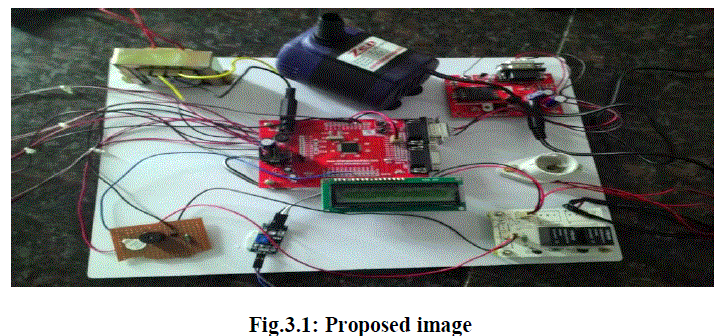 |
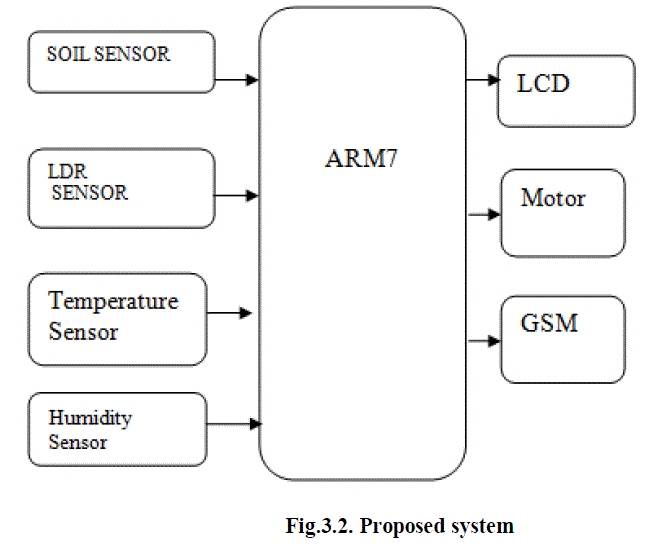 |
| 3.1. Proposed ARM RISC Architecture: ARM plans chip innovation that lies at the heart of created computerized items, from telephones and advanced cams to the diversions control boards and car frameworks, and is heading protected innovation supplier of usage is high, cost is low , power-productive RISC processors, peripherals, and framework on-chip outlines through association with associations, for example, the Virtual Socket Interface Alliance and Virtual Component Exchange . ARM additionally offers configuration and programming counseling administrations. |
| Characteristics: • load/store construction modeli • A 16x32-bit register • Mostly single-cycle execution |
3.2. Cellular Technology: |
| cellular technology used for all wireless phones irrespective of the technology they use, and they can receive and transmit calls from cellular base stations. Both cellular as well as PCS phones use cellular technology. Cellular Technology enables mobile communication because they use of a complex two-way radio system between the mobile unit and the wireless network. It uses radio frequencies (radio channels) over and over again throughout a market with minimal obstruction, to serve a large number of simultaneous. |
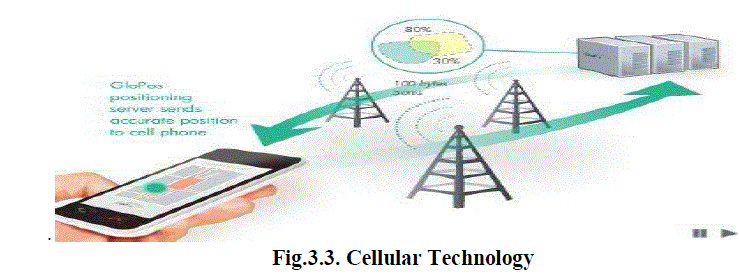 |
| 3.3. Soil Sensor : The soil moisture sensor (SMS) is a sensor that is associated to a watering system framework controller that measures soil dampness content in the dynamic root zone before each planned irrigation event and bypasses the cycle if soil moisture is above a user- defined point. Soil moisture sensor proceedings the quantity of water confined in a material, such as soil on a volumetric basis. To obtain an exact measurement, a soil temperature sensor is also required for calibration. |
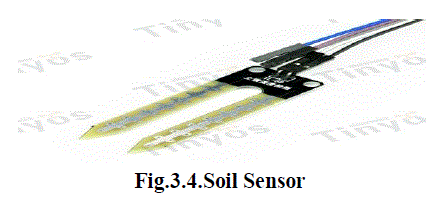 |
| 3.4. Weather Sensor : A temperature sensor is a device that is used to measure the weather, usually, a thermocouple or RTD that accommodates temperature estimation through an electrical sign. A thermocouple (T/C) is produced using two separate metals that produce electrical voltage in immediate extent to change in temperature. The LM35 are accuracy and they are integrated-circuit temperature sensors, and the output voltage is proportional directly to the Centigrade temperature. |
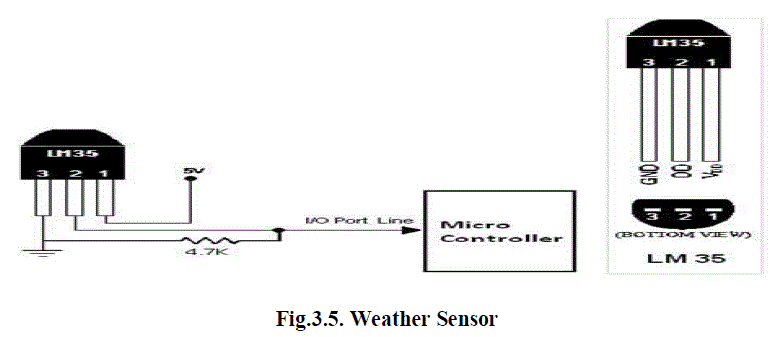 |
| 3.5. Humidity Sensor A device consisting of a special plastic material whose electrical characteristics changes according to the amount of humidity in the air. Humidity is the amount of water vapour in the air. Water vapor is the gaseous state of water and is invisible. Humidity indicates the likelihood of precipitation, dew, or fog. Higher humidity reduces the effectiveness of sweating in cooling the body by reducing the rate of evaporation of moisture from the skin. This effect is calculated in a heat index table or humidor, used during summer weather. |
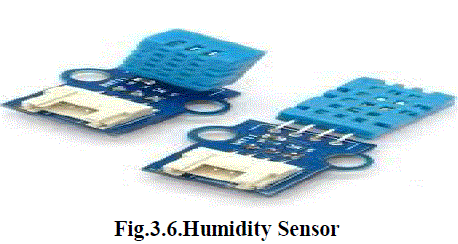 |
| 3.6. Light Sensor A device that detects the amount of light in the locality.The light sensor may be created into a Smartphone or tablet to adjust the brightness of screen based on the light available. When light falls on this sensor it changes to electrical energy. for example we have a street light has a light sensor on its uppermost. The light sensor works in the night and the day. Let's say it's daytime. There is a bunch of light coming into the sensor so the electricity is switched off. At the end of the day as it gets gloomy, the amount of light energy coming in to the light sensor reduces, and that means the electrical current is turned on in order to light the lamp. So the electrical supply is controlled by the sensor. |
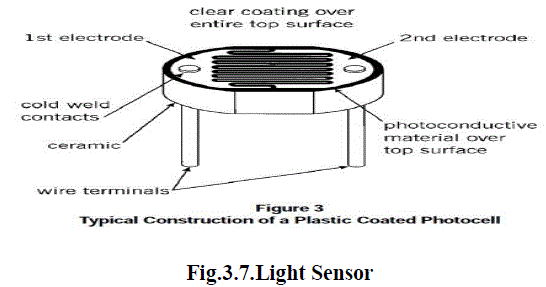 |
| 3.7. Gas Sensor A gas detector identifies the presence of various gases present within an area, frequently as part of a safety system. This type of equipment is used to identify a gas leak and interface with a control system so a process can be automatically closure. |
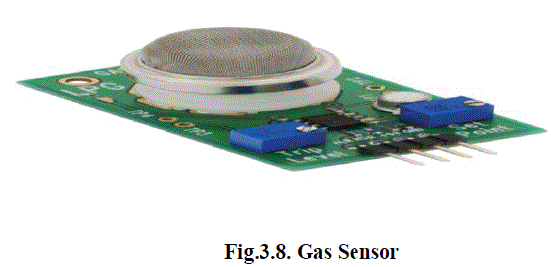 |
| 3.8 Proposed system images: The main aim of this project is to give an efficient explanation for automatic control of irrigation motor for uneducated. Presently a day's engineering is progression with time, it totally taken the way of life of individuals. in spite of the fact that there is such an essentialness for engineering in our routine life there are even individuals whose ways of life are far to this well known term innovation. So it is our commitment to outline few reliable frameworks which can be even reasonably utilized by them. This essential thought offered starting to the undertaking PDA controlled soil dampness sensor. Here the automation procedure is carried out through the micro controller based innovation. |
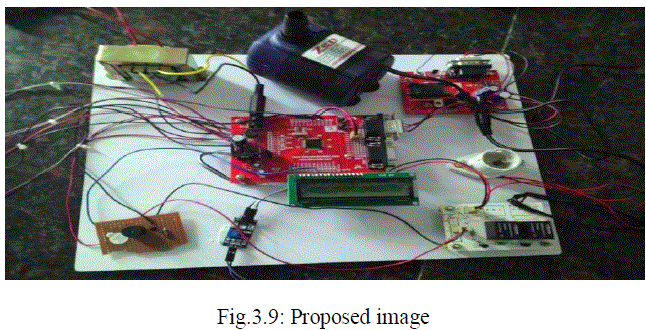 |
IV.CONCLUSION |
| Our proposed System successfully utilizes wireless technology and monitoring, control the effects of electricity (light, heat, gas.co2 and so on) often are taken for granted in our retainer homes. In order to support improved awareness in the area of consumer consumption of energy, on a large scale in society as well as on the routine level of the home |
References |
|